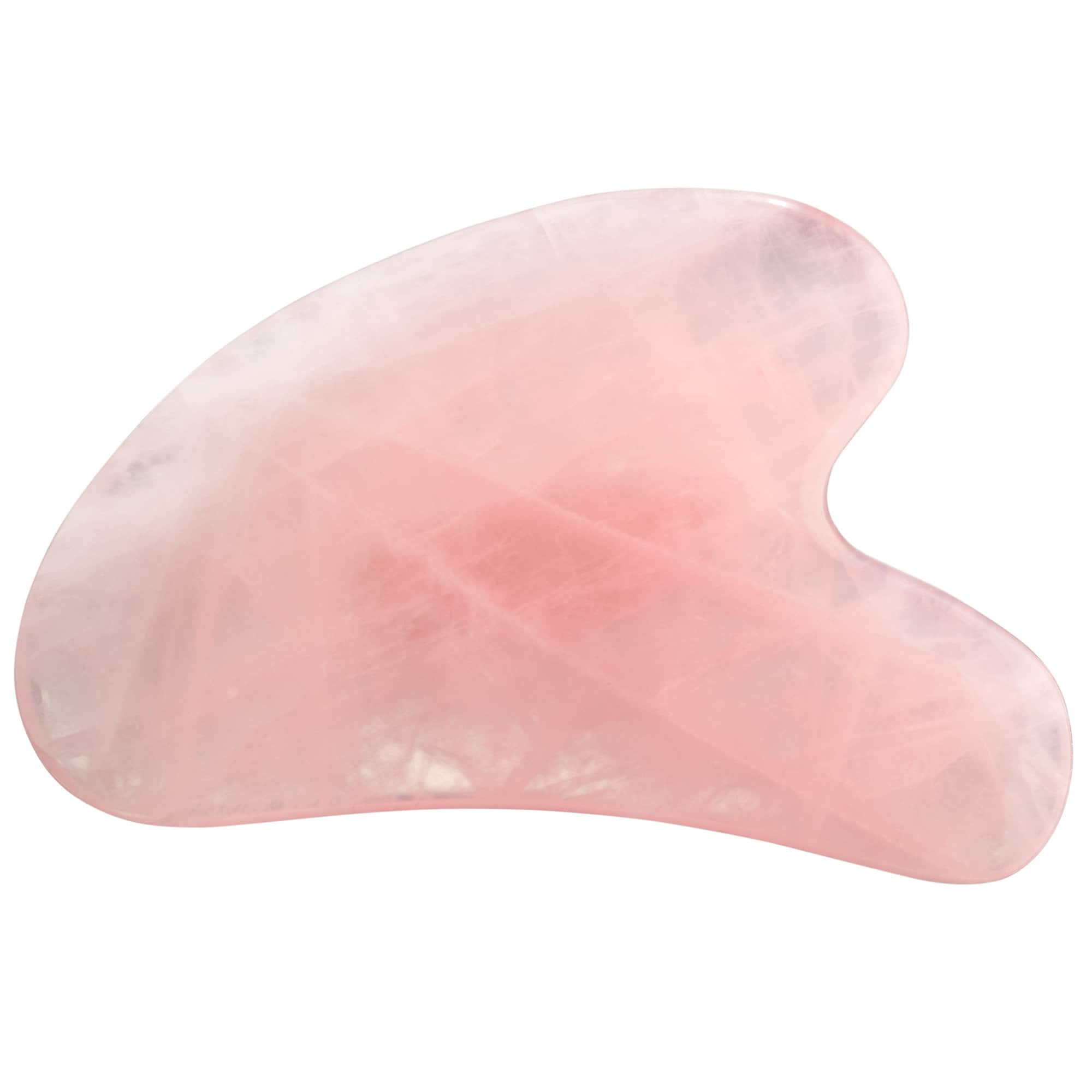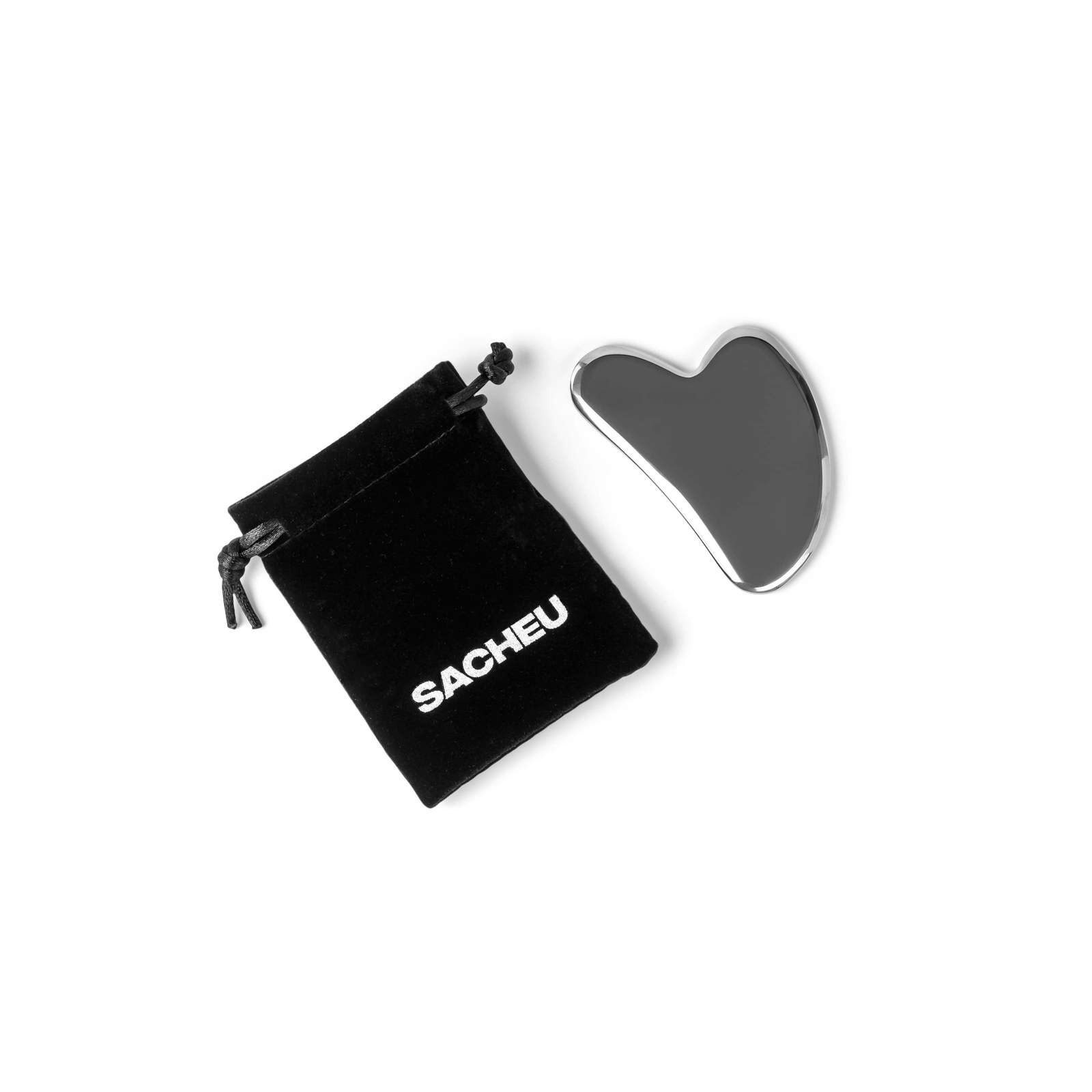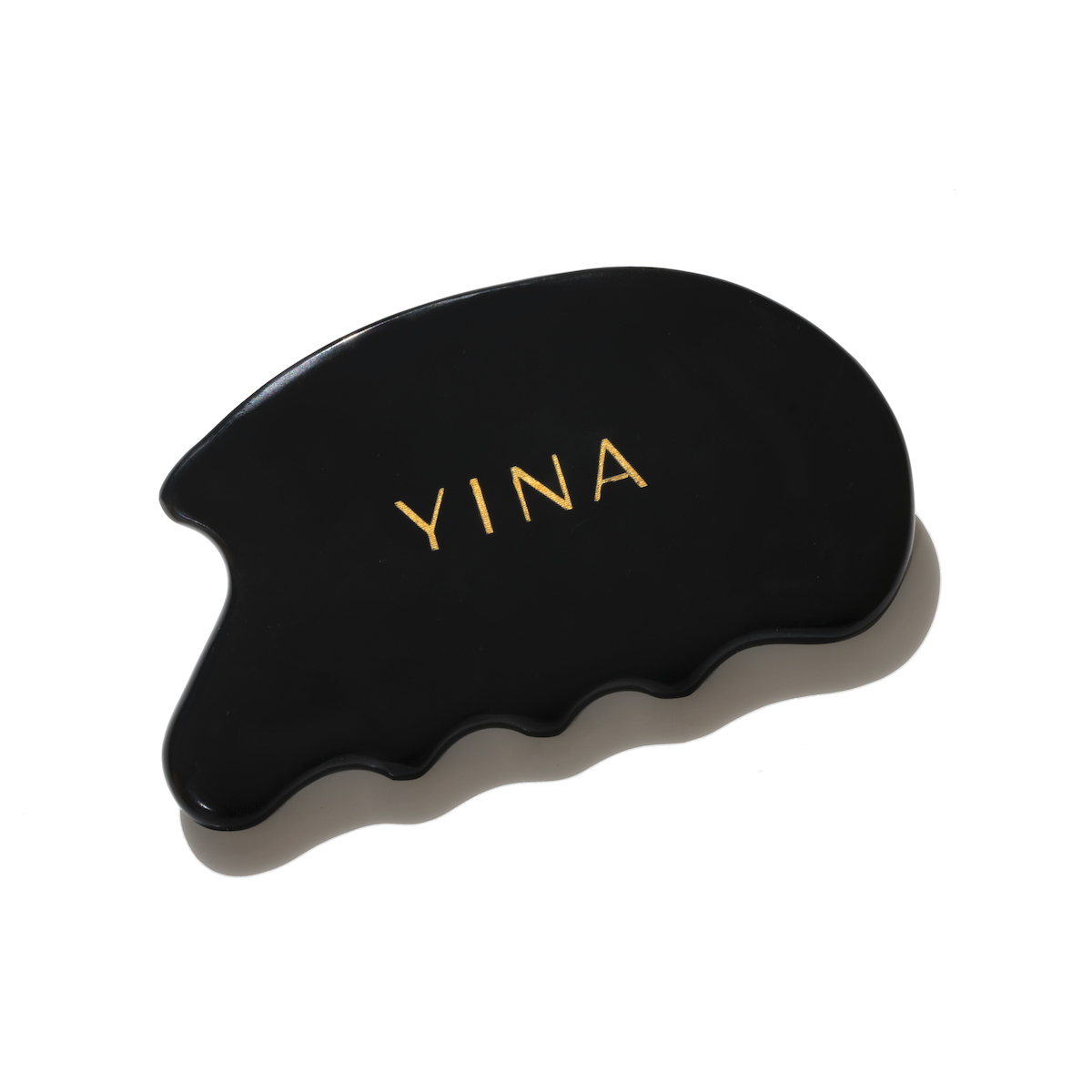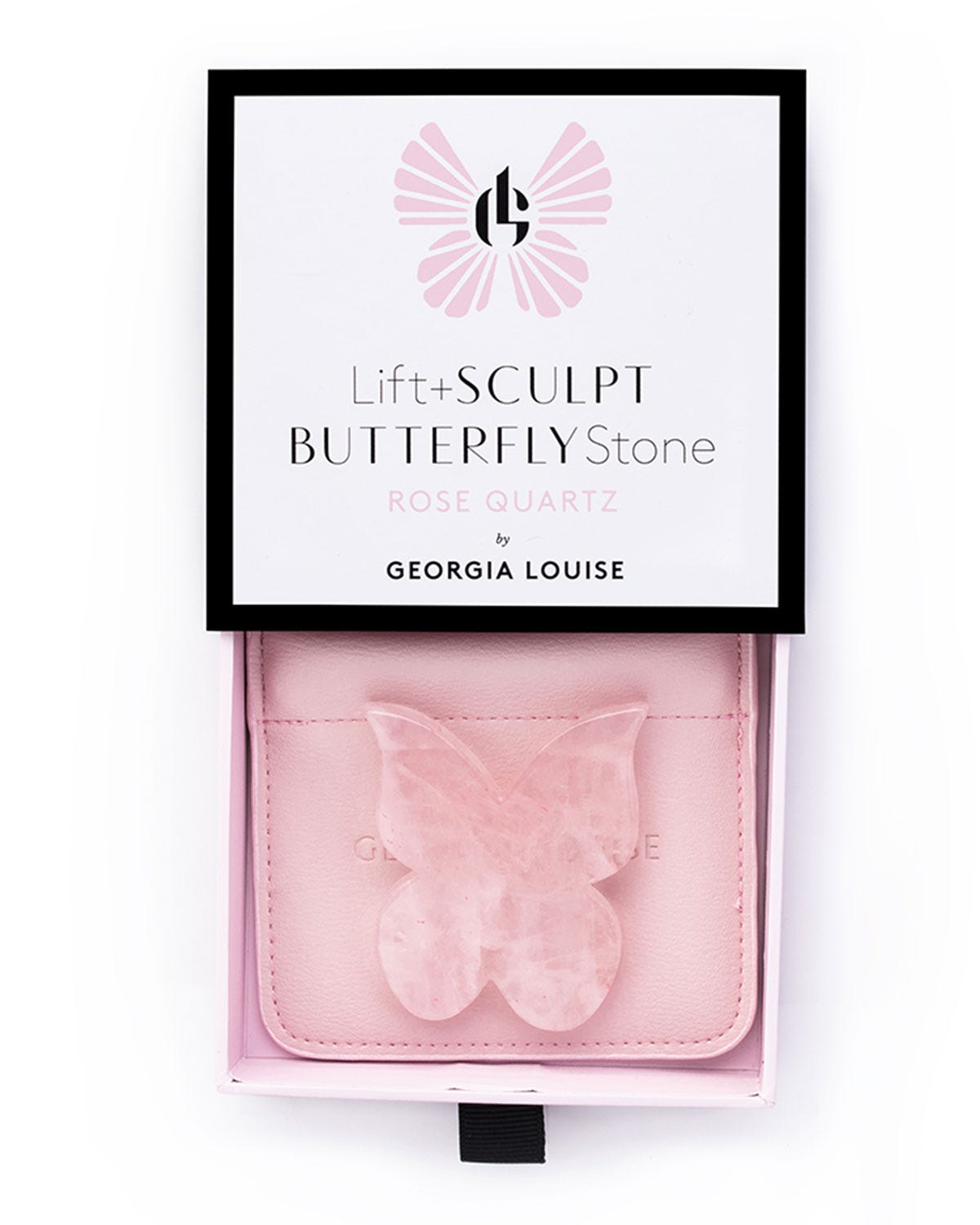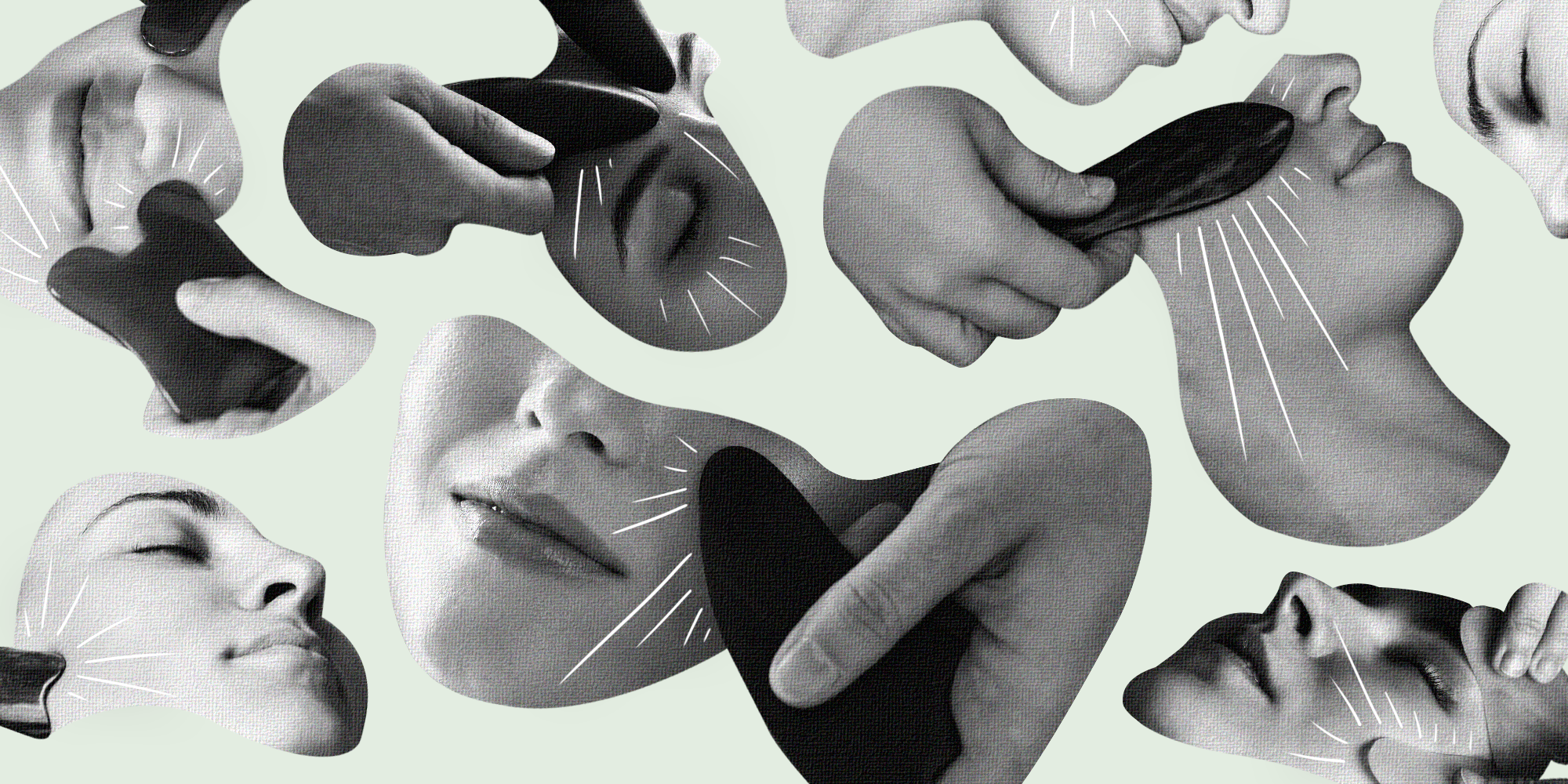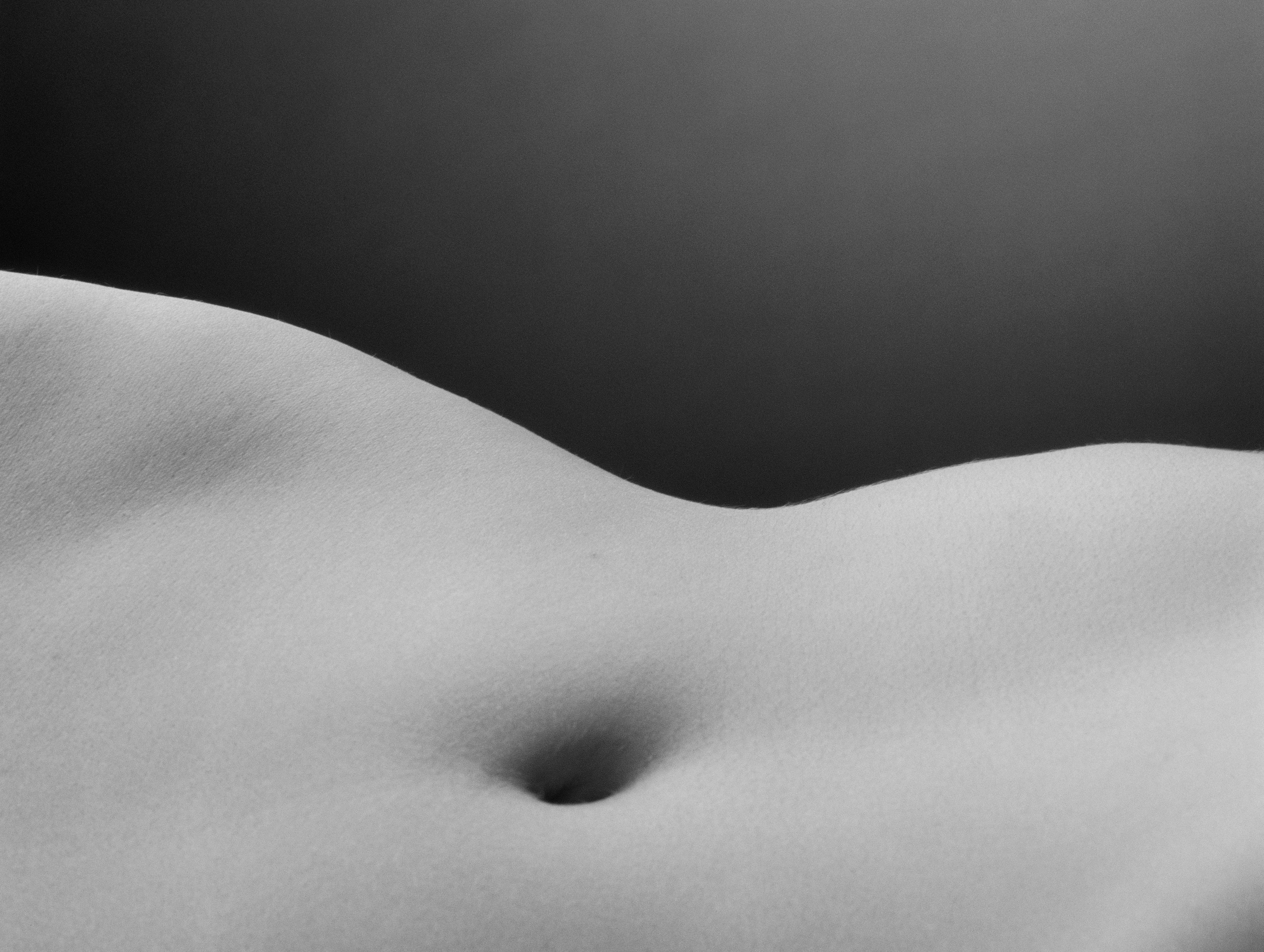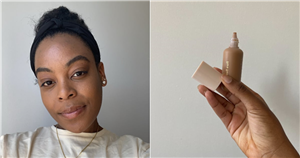If you’ve visited, well, any skincare brand’s website in the last year, you’ve undoubtedly spotted it: the Gua Sha tool. Sleek, smooth, and often created from vanity-worthy gemstones, the lymph-flushing skin care darling has an impressive past. To learn all about the trending tool and the body treatment’s many benefits, we asked the pros for a history lesson.
What Does Gua Sha Mean?
“Gua means ‘scrape’ and Sha means ‘petechiae’ (tiny, flat red, purple spots) in Chinese,” says Dr. Ervina Wu, PhD, L.Ac., and the co-founder of YINA. “Gua Sha began as a full body treatment—which most people don’t realize since facial techniques have recently become popular. The key point is to scrape the skin (commonly the upper back) to invigorate blood flow, release heat-toxins, stimulate lymphatic drainage, activate various points of the body, and bring helpful cells to the area by stimulating an immune response. Sometimes this action creates some discoloration on the skin, which can look dramatic. But rest assured, there is no pain and the petechiae usually goes away within days.”
https://www.instagram.com/p/CO7K7H9Hh2V/?utm_source=ig_embed&utm_campaign=loading
A post shared by YINA (@yina.co)
Gua Sha’s Ancient History
Though you may just now be ordering your own Gua Sha, the tools—and process—certainly aren’t new. “The earliest Gua Sha-like tool predated acupuncture in the Stone Age. [It] was fashioned out of Bian stone in various shapes used for things such as heat therapy and bloodletting,” Wu continues. “Metallic tools and needles then gained favor over stone tools during the Bronze Age. Huang Di Nei Jing, the most representative Chinese Medicine text from 475 to 221 BC notes that Bian stone tools then became known as ‘Bian Therapy’ along with acupuncture and herbal therapies.”
“According to traditional Chinese medicine, qi or chi is energy that flows through the body. Many people believe that a person’s qi must be balanced and flowing freely to ensure their health and wellbeing,” notes celebrity facialist Georgia Louise Vassanelli. Practitioners believe that stagnant qi is a possible root of inflammation—a.k.a. “the underlying cause of several conditions associated with chronic pain,” she says. “Rubbing the skin’s surface is thought to help break up this energy, reduce inflammation, and promote healing.”
GUA SHA TOOLS FOR BEGINNERS
The Original Gua Sha Tools
These days, beauty and wellness brands place special importance on the stones—often jade or rose quartz—that Gua Sha tools are crafted from. However, this wasn’t always the case, according to Vassanelli. “Gua Sha, which was used for generations by Chinese mothers as a home remedy for sick children, could have been made from any household tool to scrape the skin,” she says. That said, stone Gua Sha tools are historically accurate as well. Celebrity facialist Angela Caglia notes that Stone Age Gua Sha were “usually made of stone,” and those developed later by traditional Chinese medicine practitioners did use jade.
When Did Gua Sha Become Popular in the States?
Let’s get one thing clear: Gua Sha has always been popular. The American wellness industry at large only just now caught up. “Gua Sha has been largely practiced and used by everyday people all over Asia for centuries. Both cost effective and efficacious, it was the first form of treatment for early onset of illnesses,” explains Wu.
She does point to “an influx of immigrants from Asian countries” during the ’70s and ’80s as a reason Gua Sha became more known here. “The first articles about Gua Sha appeared in Western medical journals during this time, though they spoke of this practice in a negative light without proper research,” Wu adds. “Thankfully, now there have been numerous studies and extensive research on Gua Sha (in many languages), supporting its positive therapeutic effects.”
Vassanelli draws a comparison between Gua Sha and acupuncture. “With the rise of self-care and popularities of functional medicine and Chinese acupuncture, this became a tool that everyone at home could do that doesn’t require a medical degree,” she notes.
A post shared by Mount Lai (@mountlai)
Why Use Gua Sha On Your Face?
For many skin care fans, their first glimpse at the tool is through a website or video tutorial. So, how did Gua Sha go from full-body scraping to facial companion? Vassanelli credits its ability to break down muscular tension, as well as move qi. “At first, it’s a little painful,” she says. “But the more you practice, the less painful it gets because the inflammation is reduced, easing away discomfort, tension, and puffiness. I think we can all relate to a tool that doesn’t require batteries and can be done at home. Plus, it feels good.”
And yes, this is where the oh-so-buzzy lymphatic system comes in—the body’s impressively complex, waste-drainage system. “Unlike our cardiovascular system, which uses our heart to pump blood through it, our lymphatic system circulates lymph fluid by our muscles moving and contracting,” Alder New York’s co-founder, Nina Zilka, explains. “Gua Sha is particularly helpful for lymphatic drainage in our face because we don’t move the muscles in our face all that much. The intentional movements of a facial massage will help move the lymph through the system and result in a more toned and sculpted appearance.”
A post shared by Georgia Louise (@georgialouisesk)
The Right Technique
Now’s not the time to go rogue. “I recommend users closely follow the directions of the tool they have, and to not make up their own technique. I have seen many beauty bloggers doing it wrong in their instructional videos,” says Caglia. “It is important to go in an upward, outward direction only and press lightly by gliding over a facial oil.”
Need a little more guidance? “Using a proper Gua Sha tool, such as my Georgia Louise Lift + Sculpt Butterfly Stone, work with soft pressure (versus scraping) and glide over the face contours, working inwards and outwards to create a flushing of the skin and avoid bruising,” recommends Vassanelli.
But keep in mind that these tips are for skin care Gua Sha. “We recommend seeing a licensed TCM practitioner for the use of Gua Sha for all medical-related concerns,” says Wu.
Does Gua Sha Leave Bruises?
Short answer: occasionally. Long answer: “It can sometimes leave bruises because you are pressing hard, pushing and scraping the skin,” explains Vassanelli (and notes that bruises can be “a good sign that the treatment is working”).
Why Is Gua Sha So Popular Now?
It could have something to do with just how simple it is. In the words of Caglia: “We use so much technology, it’s nice to have a break and use an effective, soothing tool that doesn’t need to be charged.”
And hey, those sculpted results are pretty nice, too. “Besides the use of Gua Sha in TCM clinics, we can also use this technique in our self-care rituals. Gua Sha is especially effective at relieving muscular tension and breaking down fascia adhesions—perfect for those with tight muscles, sluggish circulation, and tech necks,” adds Wu. “As facial therapy, it helps de-puff, stimulate microcirculation, and promote collagen production. The key to Gua Sha is consistency.” So, go ahead and get to scraping.
Source: Read Full Article
